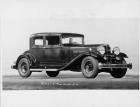|
Re: Durability of catalyzed paints vs. non-catalyzed (and aerosols)...
|
||||
|---|---|---|---|---|
|
Forum Ambassador
|
"grab" is a function of surface prep, regardless of the type of paint to be applied. I like catalyzed paints, they are durable and maintain their appearance well.
Just remember one thing: If you ask 5 journeyman body men/painters the same question you will get 5 completely different answers, each one abosolutely correct, and the other four are worng, like Italian cooking. There isn't much to argue about in terms of surface prep though, you have to get down to bare metal, deal with any rust and go from there. You will need to match this paint when you do the body on the car, mixing brands is a recipe for disaster. Stay with what you start with.
Posted on: 2012/12/12 14:41
|
|||
|
||||
|
Re: Durability of catalyzed paints vs. non-catalyzed (and aerosols)...
|
||||
|---|---|---|---|---|
|
Home away from home

|
From my limited knowledge, you would probably want to use an epoxy primer anyway which needs to be sprayed from a gun. I have heard that epoxy primer in rattle cans is not a true epoxy primer. Not sure how true that is or not.
Posted on: 2012/12/12 14:57
|
|||
|
[url=h
|
||||
|
||||
|
Re: Durability of catalyzed paints vs. non-catalyzed (and aerosols)...
|
||||
|---|---|---|---|---|
|
Forum Ambassador
|
That is true. If you do not catalyze it before spraying I would not call it epoxy paint. I really believe in epoxy primer, it is the answer to all prayers in old car work. Again, stay in the manufacturer's brand and family of product, don't mix.
Posted on: 2012/12/12 15:13
|
|||
|
||||
|
Re: Durability of catalyzed paints vs. non-catalyzed (and aerosols)...
|
||||
|---|---|---|---|---|
|
Home away from home

|
Before painting with cans or a gun, for final surface prep, what grit sandpaper should I be using on bare metal?
Thanks, Mark
Posted on: 2012/12/12 18:36
|
|||
|
||||
|
Re: Durability of catalyzed paints vs. non-catalyzed (and aerosols)...
|
||||
|---|---|---|---|---|
|
Webmaster
|
I lay down epoxy DTM primer over bare metal that was DA'd with some 100 grit. The DA leaves a crosshatched swirl pattern on the metal.
Posted on: 2012/12/12 19:17
|
|||
|
-BigKev
1954 Packard Clipper Deluxe Touring Sedan -> Registry | Project Blog 1937 Packard 115-C Convertible Coupe -> Registry | Project Blog |
||||
|
||||
|
Re: Durability of catalyzed paints vs. non-catalyzed (and aerosols)...
|
||||
|---|---|---|---|---|
|
Forum Ambassador
|
That is a good way to go. I developed a technique about a year ago while working on a 1922 Duesenberg model A, we were stripping the body and prepping for paint. I sprayed the old paint with aerosol aircraft paint stripper (the gnarliest stuff I know of) let it sit on there for about 10-15 minutes, scrape off the paint with a putty knife or bondo spreader, then take lacquer thinner and scotchbrite, soak the scotchbrite in the thinner and put some elbow grease into the pad and the metal came out spotless, and the scotchbrite put a nice swirl patteren in the metal for tooth. One advantage we found with this method: dust control. Didn't leave a film of dust over every horizontal surface in a large shop.
Posted on: 2012/12/13 8:38
|
|||
|
||||
|
Re: Durability of catalyzed paints vs. non-catalyzed (and aerosols)...
|
||||
|---|---|---|---|---|
|
Just can't stay away

|
Mr. Pushbutton, Your comments sound like the voice of experience. I have copied your advice to my Packard Restore notebook for future reference!!!
Would you happen to know the name of the aircraft paint remover??? I will shortly commence removing the rust and chipped paint from my 1949 Packard. Your methods sound exactly right for what I am about to start on my car. Thanking you in advance. Zougeride "Ask the man who has one in his garage!!!"
Posted on: 2012/12/15 9:39
|
|||
|
||||








